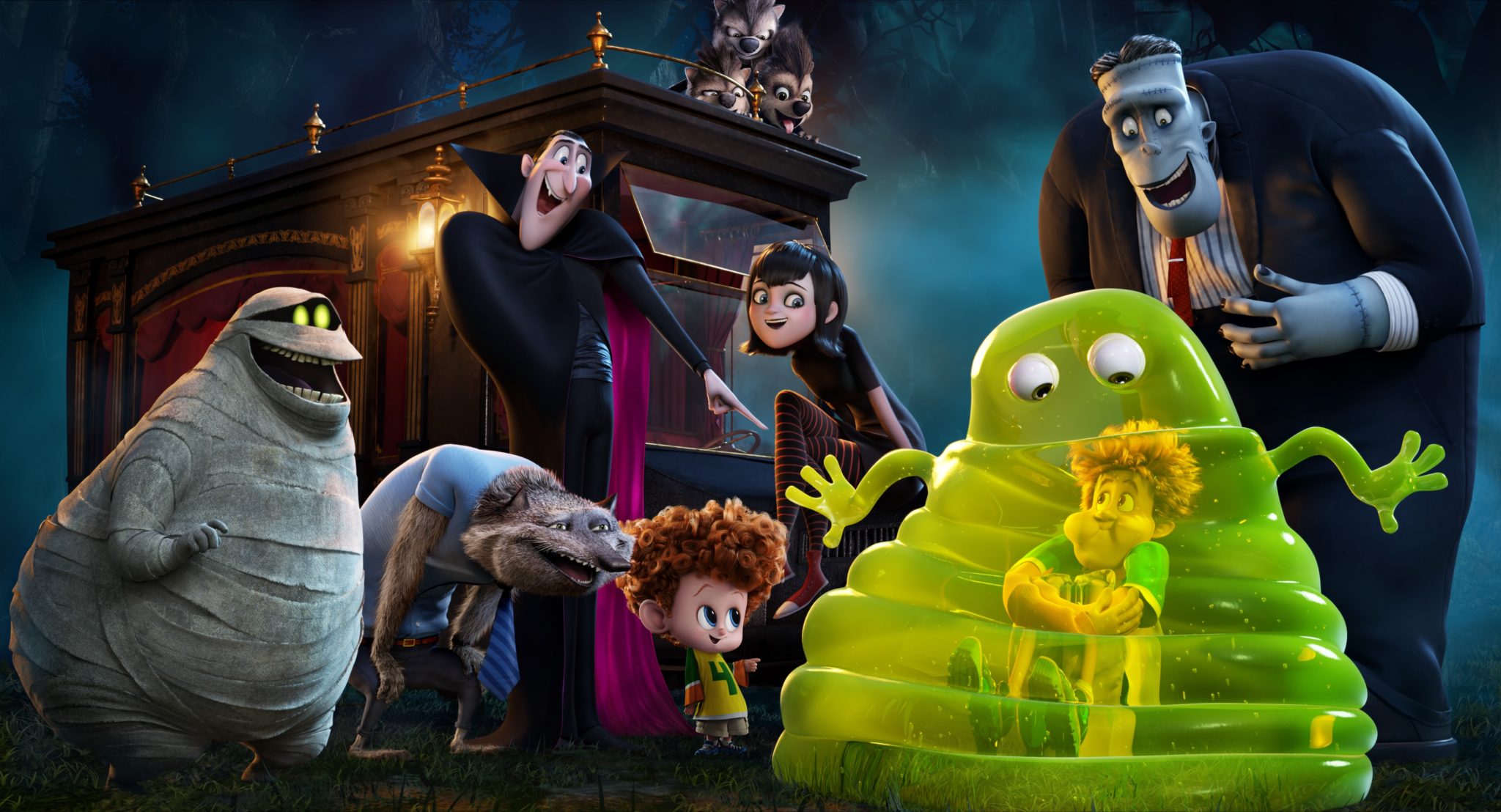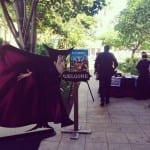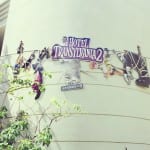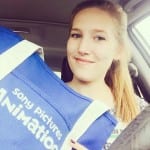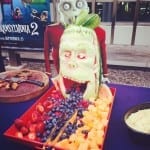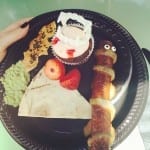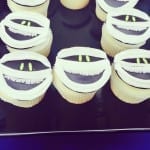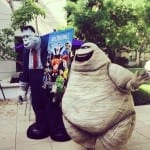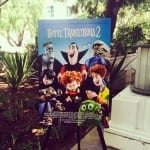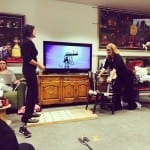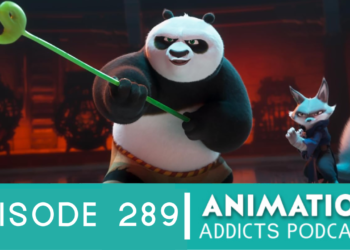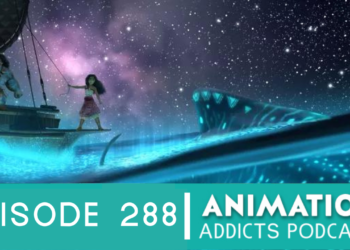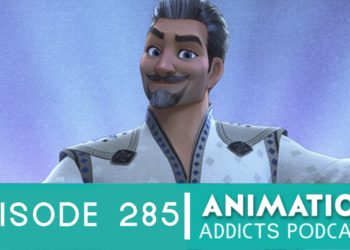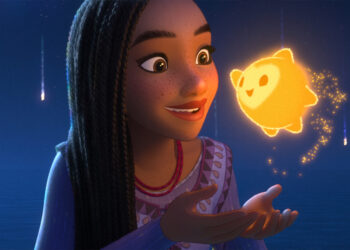In preparation for the release of its latest feature film, Hotel Transylvania 2, Sony Pictures Animation held a press day for journalists at its Culver City studio. We were given the opportunity to view the film and to speak with some of the amazing filmmakers – including the director of Hotel Transylvania 2, Genndy Tartakovsky!
After viewing the film we were served a monster-tastic lunch, complete with Dracula’s Chocolate Raspberry Cupcakes and Vlad’s Iced Tropical Tea. However, after lunch was when the real fun began! We were divided into groups and were given the opportunity to participate in roundtable interviews and presentations with director Genndy Tartakovsky and producer Michelle Murdocca; production designer Michael Kurinsky, visual effects supervisor Karl Hurbst, and senior animation supervisor Alan Hawkins; and foley artists Robin Harlan and Sarah Jacobs.
Genndy Tartakovsky and Michelle Murdocca
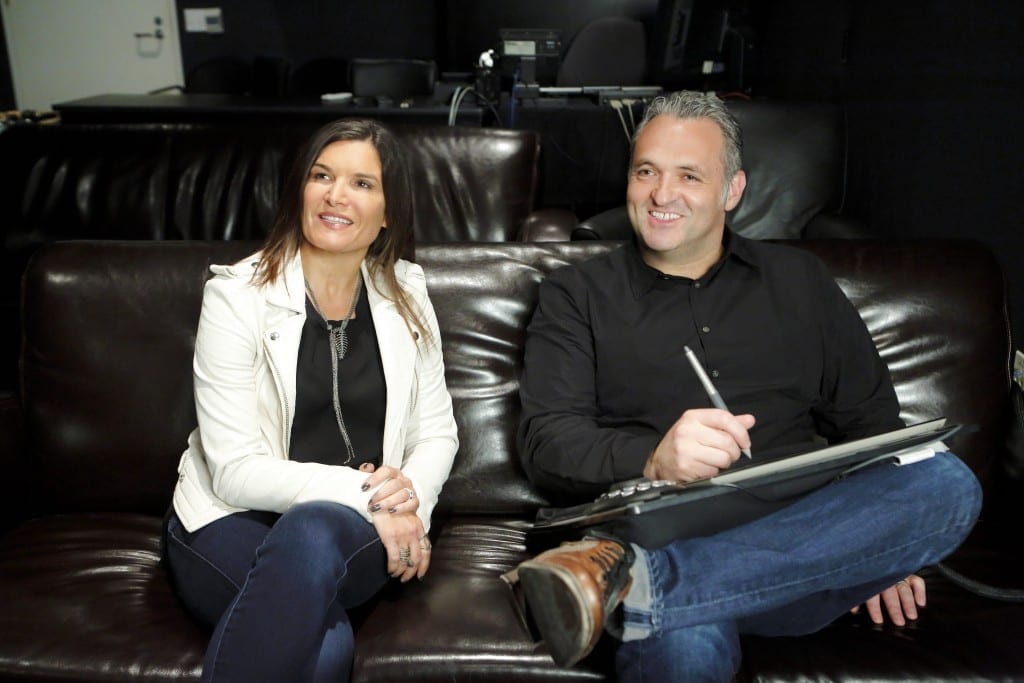
Director Genndy Tartakovsky and producer Michelle Murdocca spoke about some of the challenges they faced making the film and about what they feel is the real “heart” of Hotel Transylvania 2.
“I think it’s always the characters and it’s that idea of the parental tug of war with their child,” Tartakovsky said. “You know, the mom wants the most of it. The dad, or granddad in this case, wants to be involved. So it’s a little bit of those generations and passing down traditions, but in this case it’s monster verses human. I think, at the end of the day, it’s about that and about acceptance.”
Both Murdocca and Tartokovsy spoke about some of the challenges of creating the Hotel Transylvania sequel, specifically the need to make sure they created a monster movie that wasn’t too scary for audiences.
“We can’t take this movie to a place that’s too scary,” Murdocca said. “We have to do it all in fun. So, it ends up being kind of tongue in cheek, but it’s a softer version.”
“The end fight sequence,” Tartakovsky continued, “everybody was nervous about it. Because, before you put all the expressions and the goofiness in, in the storyboards it feels like it’s going to be kind of intense and scary. We did this press junket and all the international managers were like, ‘Genndy, you know we’re really nervous. We think you made the ending too intense. We’re really worried about it.’ And I go, ‘No, you’re not seeing the goofiness that it’s going to end up being!’ But once they started seeing the footage they all relaxed.”
“Because those cronies,” Murdocca added, “they can look kind of scary, but we just made them really goofy. They weren’t really seeing that in the storyboards, so everybody was a little nervous about it.”
Both Murdocca and Tartakovsky emphasized that they prefer creating silly monster movies as opposed to frightening and intense ones.
“You know, as a kid I hated to be scared and I never watched scary movies,” Tartakovsky explained. “My introduction to monsters were Abbott and Costello Meet Frankenstein and, or course, Young Frankenstein. And I was much happier in that place. So, for doing this movie, the sensibilities actually translated perfectly because we didn’t want to be scary. With the first movie – I don’t know if you remember – it came out at almost the same time as Frankenweenie and ParaNorman, which were creepier and darker, and we were just kind of silly. Just more like MAD Magazine than anything. So, I think we’re pretty comfortable with that tone for our monsters.”
Tartakovsky also explained how he was able to help make the animation of Hotel Transylvania 2 reflect his own, unique animation style. Using a drawing tablet, Tartakovsky would do “draw overs” on already animated scenes. This involved tracing over a computer animated frame with a 2D drawing that illustrated how Tartakovsky wanted the featured character’s movement to be. Animators would then change the animation to match Tartakovsky’s drawings.
Speaking about the effectiveness of this process, Tartakovsky said, “To be honest, I wouldn’t be able to do the movie without it because you can’t verbalize the kind of animation that we do. I can’t say, ‘Oh yeah you want to stretch his arm out longer and have him grab it like this or whatever.’ I have to draw it. I’m from an animator’s background. I’ve done a lot of animation work and storyboarding and stuff, so, for me, it’s the most essential tool, really for everything. I’m not the most articulate person in the world so I can communicate with drawing a lot better.”
Michael Kurinsky, Karl Hurbst, and Alan Hawkins
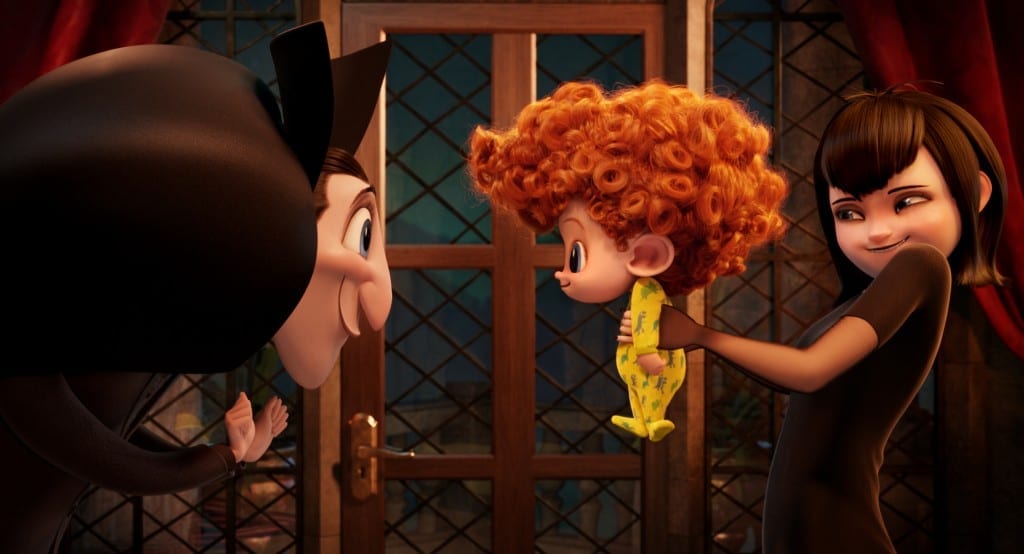
Explaining the draw over process in more detail, senior animation supervisor for Hotel Transylvania 2, Alan Hawkins, laid out the basic steps:
“Genndy has the Cintiq, which he does draw overs on, which are pretty much the best notes we can get because his drawings are so awesome and so fun. He does the drawings and the animators are there, either in person or in Vancouver, then we take the drawings and we can bring them right into our scene.”
“Matching the drawing is really important,” Hawkins continues. “It was a big step forward on this film. In the first film we couldn’t actually bring it into the scene and so we had to kind of eyeball it. We got close, but never really had as much of a direct connection. So this was a big help to us in the animation department.”
“There’s sort of a process: we start with the animation controls, we get as far as we can, and then the last little bit is what we call ‘modeling,’ which is like sculpting the shape rather than moving the puppet. And so every little bit has to be just right.”
“So that’s really how it works in animation. We show [Genndy] our version – we kind of pitch our idea – and he says, ‘Go play off of it,’ or he’ll say something totally different and then we’ll do whatever we can to hit that pose. We’ll show him again. He might change his mind or he might make some tweaks on some other guys.”
Karl Hurbst, the visual effects supervisor for Hotel Transylvania 2, joked about the desire to create some type of “algorithm” to speed up the animation process:
“We joke about it all the time,” Hurbst said. “Especially since the cloth simulation in Genndy’s world is actually quite difficult. [Alan Hawkins’ team] ended up kind of leading the way and then we actually do simulation, but the simulation ended up being lots of little pieces that we put back together to try to ‘Genndyfy’ what physically happened that he wants to cartoonify.”
Kurinsky, Hurbst, and Hawkins also spoke about how the world of Hotel Transylvania 2 differs visually from its predecessor. Describing what it took to create this visually stunning world, production designer Michael Kurinsky explained, “In this movie, I didn’t have to start from literally a white, blank page. We had the first movie, we all know Hotel Transylvania one, and so I had that world that I could already play in.”
“What we have in this movie in particular is that most of the first movie took place in the monster world, so we have a spilt in this one where we see a lot of the monster world but we also get to see a lot of the human world,” Kurinksky explained. “For the monster world a lot of our assets were already built. Obviously our castle is going to remain the same and our main characters are remaining the same, but the way I looked at it is that I inherited this really cool toy to play with and it was like, ‘So how do I want to play with it?’”
“What I didn’t want to do was to take away from anything that was established in the first movie, but what I did want to do was to put my own spin on it using different types of lighting that you maybe didn’t see. So things that were old felt new.”
Kurinsky also noted that Dennis’s bedroom was a setting in which they were able to use elements from both the human and monster worlds: “Dennis’s bedroom is a really good example of two things. It’s the monster and the human world coming together, because that’s exactly who the character of Dennis is. He’s half monster and half human. You don’t know which way he’s going to lean. So, we designed his room to feel sort of monstery – the walls and the skeleton of it are very monstery – but with very humany things that you would see in any kids’ room.”
Robin Harlan and Sarah Jacobs
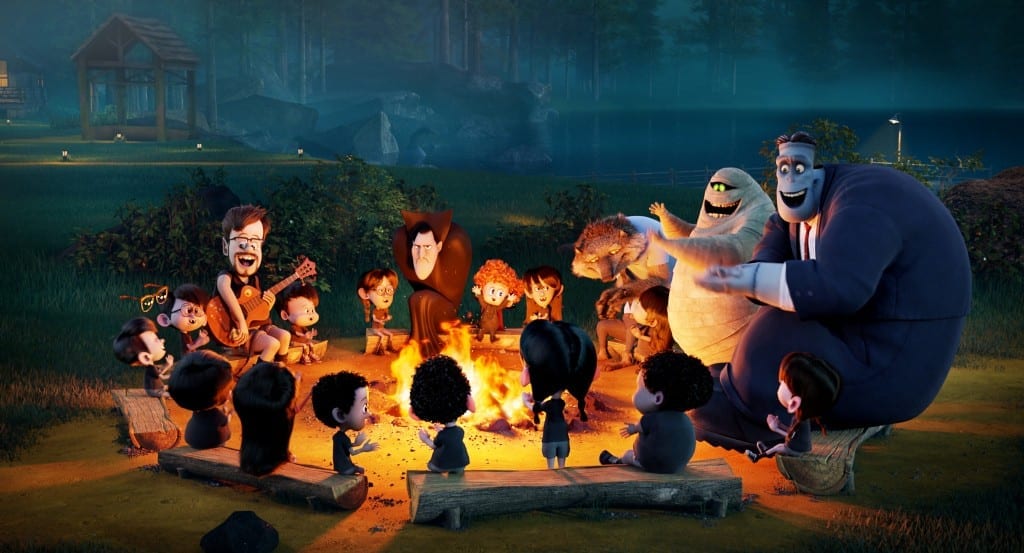
Robin Harlan and Sarah Jacobs, who both served as foley artists for Hotel Transylvania 2, explained how the foley process for animation differs from that of live action:
“There’s dialogue, there’s music, there’s sound effects, and then there’s foley,” Jacobs explained. “That’s the human organic element: the footsteps, the props, the things [characters] touch.”
“What’s exciting about working on animation as opposed to live action is that there’s no production track,” Harlan continued. “You essentially just get the raw picture and you really get to be creative.”
“There’s a lot of choices to be made on any given scene at any given moment and so that’s why we tend to cover everything. Then it goes to another room with mixers, the directors, some sound editors and they do the key choices that will end up in the final mix. But what Sarah and I are primarily responsible for are footsteps and props.”
“We’re problem solving all the time,” Jacobs added. “In Hotel 2, this hotel now has humans and monsters in it so we want to make that distinction and we also want the monsters to sound different. We want different sounds, so they all have a little element of uniqueness to their sounds in addition to the human sounds.”
Harlan and Jacobs demonstrated how they use a wide variety of foley props to create character sound effects for the movie. The “swishing” sound of Dracula’s cape, for example, was created by the rapid opening and closing of an ordinary umbrella. Everything from sandbags to animal bones were used to create the unique sounds audiences hear in the film.
Below, Jacobs and Harlan demonstrate how they created the sound effects for a scene in which Dracula and Dennis climb the rickety tower at vampire camp:
Read Morgan’s review of Hotel Transylvania 2 here. For more with Genndy Tartakovsky, check out Mason’s interview with him on the Rotoscopers’ YouTube channel.


